How to Choose the stage lighting system manufacturer and supplier in us?
- Introduction: Why choosing the right stage lighting system manufacturer matters
- Understand buyer intent: Why you searched for a stage lighting system manufacturer
- Key technical standards and compliance for stage lighting systems
- Control protocols and interoperability
- Evaluate manufacturing capability: capacity, IP, and production quality
- Example: LQE manufacturing profile and what it means for buyers
- Quality control and long-term reliability of LED stage lighting
- Warranty, service, and spare parts availability
- OEM/ODM flexibility and customization for stage lighting systems
- Supply chain, lead time, and logistics for US deliveries
- Cost vs. value: evaluating price, lifecycle cost, and ROI
- Comparing potential manufacturers and suppliers: clear side-by-side metrics
- Factory audits and due diligence checklist for US buyers
- Sample testing and technical validation
- Payment terms, contracts, and intellectual property protection
- Why choose an experienced OEM/ODM like LQE for LED stage lighting
- Decision-making matrix: prioritize what matters to your project
- Negotiating terms and ensuring after-sales success
- Conclusion: A practical path to selecting your US stage lighting supplier
- Further reading and reliable references
- Frequently Asked Questions
- Contact LQE for OEM/ODM stage lighting needs
Introduction: Why choosing the right stage lighting system manufacturer matters
Selecting the right stage lighting system manufacturer and supplier in the US is a business decision with long-term impact on show quality, uptime, total cost of ownership, and safety. Whether you are a production company, rental house, theatre, or integrator, a dependable LED stage lighting partner ensures consistent color, accurate beam control, integrated control protocols, reliable delivery, and strong after-sales support. This guide explains what to evaluate, compares key criteria, and shows how a global OEM/ODM like LQE can meet US buyer requirements.
Understand buyer intent: Why you searched for a stage lighting system manufacturer
Most buyers searching “stage lighting system manufacturer and supplier in US” are looking for credible vendors who can provide: high-quality LED stage lighting; manufacturing consistency; certifications for the US market; reliable logistics and warranty; and the ability to supply fixtures for concerts, theatres, studios, houses of worship, and themed venues. This guide addresses those commercial needs so you can shortlist and vet suppliers efficiently.
Key technical standards and compliance for stage lighting systems
When evaluating a stage lighting manufacturer, confirm support for the technical standards and safety certifications that matter in the US market: DMX512 and network protocols (Art-Net, sACN/ANSI E1.31) for control compatibility; UL/ETL listings for electrical safety; CE/RoHS for environmental compliance if you also import; and FCC/EMC considerations for electronic emissions. Vendors should be able to provide the necessary test reports and certification documentation.
Control protocols and interoperability
Ensure fixtures support the control protocols your systems use—classic DMX512 (USITT), and popular network protocols like Art-Net and sACN (ANSI E1.31). This avoids expensive retrofit work and ensures smooth integration with consoles and media servers.
Evaluate manufacturing capability: capacity, IP, and production quality
Manufacturing capability determines whether a supplier can scale with your needs. Important metrics include production area, annual output, R&D and patent strength, and quality systems like ISO 9001. Suppliers that publish these metrics are typically more reliable and transparent.
Example: LQE manufacturing profile and what it means for buyers
LQE was founded in 2008 and is headquartered in Foshan, China. The company operates a production base of about 10,000 square meters, has an annual production capacity of up to 100,000 lighting fixtures, and holds 80 national patents. For US buyers, these indicators mean LQE has scalable OEM/ODM capabilities, R&D depth for custom requests, and experience delivering mid- to high-end digital LED stage lighting in quantity.
Quality control and long-term reliability of LED stage lighting
Quality control impacts fixture lifespan, color stability, and maintenance costs. Ask manufacturers about their incoming material inspections, SMT and wave-solder processes, burn-in testing, IP/thermal testing, and final inspection rates. A factory that provides clear failure rate metrics and an established QC process reduces risk for rental fleets and permanent installations.
Warranty, service, and spare parts availability
Commercial buyers need more than a low price; they need predictable service. Confirm warranty terms (length, coverage for LEDs, drivers, and motors), availability of spare parts, and whether the manufacturer offers regional service partners or can ship parts quickly to the US. A factory that supports OEM/ODM technical documentation simplifies repairs and integration.
OEM/ODM flexibility and customization for stage lighting systems
If you require private-label fixtures, firmware customization, specific optics, or different power/voltage configurations for the US market, verify the manufacturer’s OEM/ODM experience. Ask for case studies or references of previous custom projects. Companies with a strong R&D team and patent portfolio tend to be more capable of tailored solutions.
Supply chain, lead time, and logistics for US deliveries
Confirm lead times, minimum order quantities (MOQs), production schedule guarantees, and shipping options to the US (air, sea, bonded warehouse). Evaluate whether the supplier maintains safety stock of commonly used components, which reduces disruption risk. Also check if the manufacturer can support drop-shipping or consolidated shipments for multiple venues.
Cost vs. value: evaluating price, lifecycle cost, and ROI
Lowest initial price rarely equals lowest total cost. Compare the initial fixture price with expected lifespan, energy consumption (LED efficiency), maintenance intervals, and spare part cost. A higher-quality LED stage lighting system with robust warranty and lower power draw often provides a better ROI over time.
Comparing potential manufacturers and suppliers: clear side-by-side metrics
Use a comparison table to evaluate short-listed manufacturers objectively. Below is a sample comparison template populated with example criteria and LQE’s provided data to illustrate how to compare suppliers for US procurement.
| Evaluation Criteria | What to check | Example: LQE (provided data) |
|---|---|---|
| Location & logistics | Factory location, US distribution, lead time | Headquartered in Foshan, China; supports OEM/ODM shipping to US |
| Production capacity | Annual output and scalability | 10,000 sqm base; capacity ~100,000 fixtures/year |
| R&D & IP | Patents, design team | 80 national patents; dedicated R&D for digital stage lighting |
| Certifications | UL/ETL, CE, RoHS, ISO 9001 | Provides industry-standard certifications on request (confirm specific reports) |
| Warranty & service | Warranty length, spare parts, US service partners | Committed to customer service; confirm warranty terms per order |
| Product range | Moving heads, static lights, LED fixtures for varied venues | Diverse range suited for theaters, concerts, studios, houses of worship, theme parks |
Factory audits and due diligence checklist for US buyers
Before signing a large contract, perform due diligence: factory tour or third-party audit, request sample testing, verify QC records, ask for client references (especially US clients), and check export/compliance documentation. Audits reduce the risk of production surprises and help validate lead-time promises and quality claims.
Sample testing and technical validation
Always request production samples and run them through your rig: confirm color rendering index (CRI), CCT, beam angles, photometric reports (IES files), dimming curves, and noise/heat performance. For rental houses, durability and quick-repair design (modular parts) are critical.
Payment terms, contracts, and intellectual property protection
Negotiate clear contracts covering payment milestones, delivery schedules, quality acceptance criteria, warranty obligations, and IP ownership for any custom designs. For private-label products, ensure trademarks and design IP are explicitly addressed in the agreement.
Why choose an experienced OEM/ODM like LQE for LED stage lighting
LQE combines mass production capability with R&D depth and patent protection. For US buyers seeking an OEM/ODM partner for mid- and high-end digital stage lighting, LQE’s production scale (10,000 sqm base and 100,000 fixtures/year) and 80 national patents indicate strong engineering capacity and the ability to supply consistent product quality at scale. LQE’s product range covers moving heads and static lights suitable for a wide set of venues, making them a candidate for both rental fleets and fixed installations.
Decision-making matrix: prioritize what matters to your project
Different projects have different priorities. Use this quick matrix to prioritize supplier criteria based on your needs.
| Project Type | Top Priorities | Suggestions |
|---|---|---|
| National touring production | Durability, spare parts, quick-turn service | Choose supplier with strong QC, modular design, available parts in US |
| Theatre/permanent install | Long-term warranty, dimmer compatibility, color consistency | Look for certified fixtures, photometric reports, and extended warranty options |
| Rental house | Price-to-durability ratio, easy maintenance | Prefer robust fixtures with field-serviceable modules |
| Studio & broadcast | Flicker-free operation, high CRI, stable color temperature | Choose fixtures with documented flicker performance and high CRI values |
Negotiating terms and ensuring after-sales success
Negotiate clear SLAs for delivery and defect rates, establish repair turnaround times, and set up an escalation path for urgent issues. Confirm whether the supplier provides firmware updates, technical training, and troubleshooting documentation for field technicians in the US.
Conclusion: A practical path to selecting your US stage lighting supplier
Choosing a stage lighting system manufacturer and supplier in the US requires balancing technical compatibility, manufacturing capacity, compliance, logistics, and long-term support. Use objective metrics—certifications, production capacity, QC procedures, warranty, spare parts, and OEM/ODM capabilities—to shortlist vendors. For projects that require mid- to high-end LED stage lighting with OEM/ODM flexibility, consider suppliers like LQE that combine production scale (10,000 sqm, 100,000 fixtures/year) with substantial R&D and patents. Always validate claims with factory audits, sample testing, and documented references before committing to large orders.
Further reading and reliable references
To validate certifications, control protocols, and compliance, consult these authoritative sources and standards organizations when conducting supplier due diligence:
- USITT — DMX512 standard and documentation (control protocol)
- ESTA / ANSI — E1.31 (sACN) network lighting control standard
- UL (Underwriters Laboratories) — electrical safety standards and listings
- ETL (Intertek) — safety testing and certification lab reports
- CE and RoHS — environmental compliance standards commonly requested for exported goods
- ISO 9001 — quality management system standard for manufacturing
- FCC — electromagnetic compatibility and emissions requirements for electronic devices in the US
- LQE company data as provided by the manufacturer (founding year, facility size, capacity, patents)
Frequently Asked Questions
What certifications should I insist on when importing stage lighting fixtures to the US?Insist on UL or ETL safety listings for electrical products used in the US. Also request FCC compliance statements for EMI/EMC. If fixtures will be used in Europe, also confirm CE and RoHS compliance. Ask the supplier to provide test reports and certification numbers.
How do I verify a manufacturer’s production capacity and reliability?Request factory photos, production schedules, third-party factory audits, and sample shipment records. Ask for references and case studies of previous deliveries to US customers. Verify QC procedures such as incoming inspection, burn-in testing, and failure rate metrics.
Should I prioritize price or warranty when buying stage lighting systems?Prioritize total cost of ownership. A lower upfront price may result in higher maintenance and replacement costs. Consider warranty length, spare parts availability, and energy efficiency to assess ROI.
What are common control protocol issues to check before purchasing fixtures?Confirm support for DMX512, and if you use network control, verify Art-Net or sACN compatibility. Check channel footprint, RDM support, and whether the fixture responds predictably to your console and media servers.
How can I handle spare parts and repairs for fixtures shipped from overseas?Negotiate spare parts kits as part of the order, establish lead times for replacement parts, and inquire about regional distributors or repair partners in the US. Some manufacturers offer consignment stock or drop-shipping to speed repairs.
What documentation should I require for each order?Request packing lists, commercial invoices, test reports (photometric, electrical safety), certification documents (UL/ETL/CE/RoHS), warranty terms, and operator/maintenance manuals.
Contact LQE for OEM/ODM stage lighting needs
If you need a supplier capable of high-volume, mid- and high-end LED stage lighting with OEM/ODM flexibility and comprehensive product range, LQE (founded 2008, Foshan) is positioned to serve global buyers, including the US market. Reach out with your specification, required certifications, expected volumes, and timeline to start a formal evaluation.
OEM/ODM dj lights moving head beam Manufacturers and Suppliers
The latest trends for vintage fresnel light | LQE Ultimate Insights
Top Waterproof LED Stage Lights for Outdoor Concerts and Festivals
Best floor stage lights manufacturers and supplier brands in us
Distributor
How can I apply to become a distributor?
Simply fill out the contact form on this page or email us directly with your company information, market background, and cooperation intention. Our sales team will get in touch with you within 1–2 business days.
Do you offer OEM/ODM support for distributors?
Yes, as a professional OEM/ODM manufacturer, we support brand customization, including logo printing, packaging design, and even custom features based on project needs.
What types of companies can become LQE distributors?
We welcome partnerships with companies that have experience in the entertainment, AV, lighting, or stage equipment industries. Whether you are a local reseller, importer, system integrator, or project contractor, we are open to exploring win-win cooperation.
1000w
Does LQE Offer a Stage Light Design Solution?
LQE experienced team glad to supply a stage lighting configuration design solution or suggestion for projector who don’t have much experience in lighting design, project, theatre and studio.
Can I Have a Sample Order for an LED DJ Light?
Sure, sample order are welcome to test and check LQE quality. Mixed samples are acceptable.
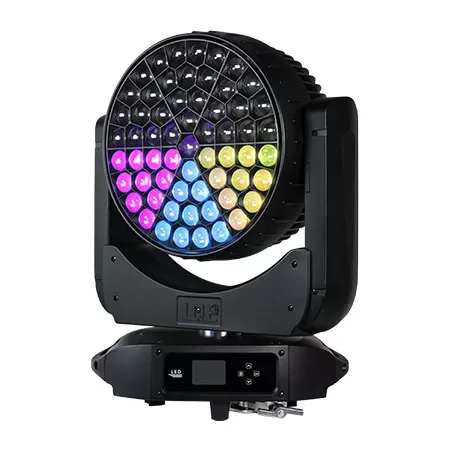
1000w 61x40w RGBW Stage Moving Head Wash Light LW1000
1000W 61x40W LED RGBW Mulichips Moving Head Wash Lights with Zoom (5°–50°), Covering Large Range and Long Distance. Designed to deliver a 5°–50° ultra-large zoom range to achieve a greater wash effect, illuminating stages and events with stunning lighting effects.

600w 19x40w RGBW Stage Moving Head Wash Light LW600 Zoom IP20
600W 19x40W LED RGBW Mulichips Moving Head Wash Lights with Zoom (5°–50°), Covering Large Range and Long Distance. IP20: Designed to deliver a 5°–50° ultra-large zoom range to achieve a greater wash effect, illuminating stages and events with stunning ring control lighting effects.

LED Moving Head Stage Wash Light LW200Z
The versatile moving head stage light provides a powerful lighting solution for theaters, concerts, and large outdoor performances. Suitable for theaters, TV stations, entertainment stages, and large outdoor performance scenes.
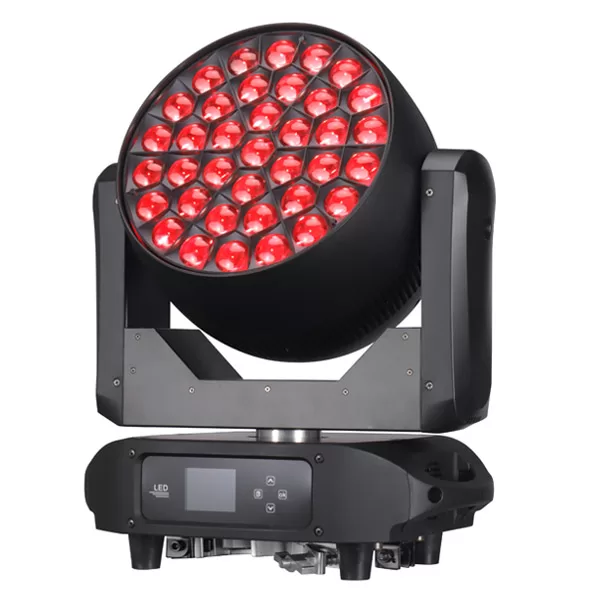
800w 37x40w RGBW Stage Moving Head Wash Light LW800
800W 37x40W LED RGBW Mulichips Moving Head Wash Lights with Zoom (5°-50°), Covering Large Range and Long Distance. Designed to deliver a 5°–50° ultra-large zoom range to achieve a greater wash effect, illuminating stages and events with stunning ring control lighting effects.

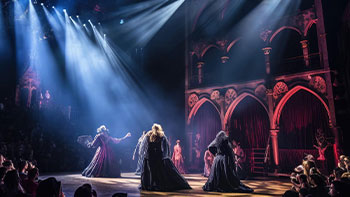
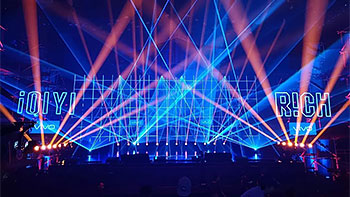

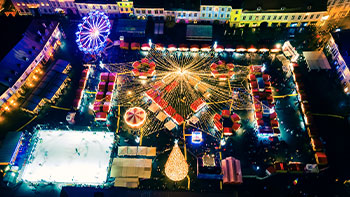








Linkedin
YouTube
Whatsapp: +8618924548390
TikTok